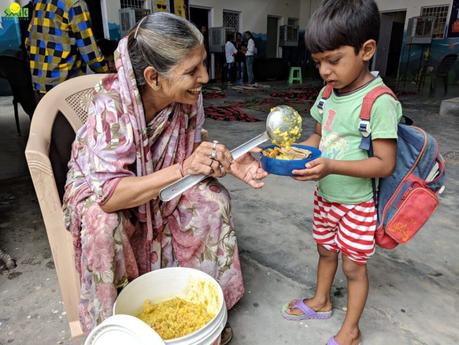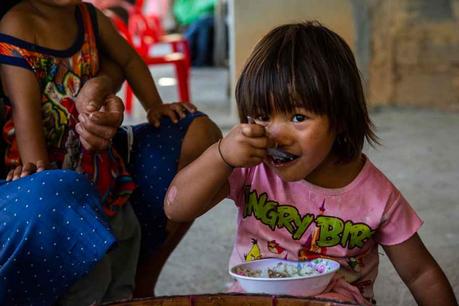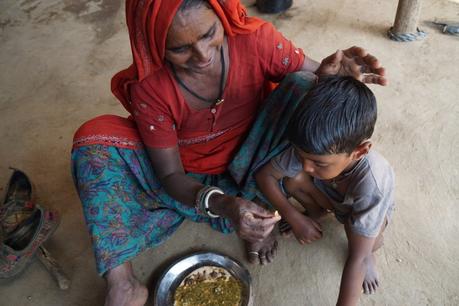Concerns have recently been raised about the Indian government's estimates of food aid demand based on: UN report about nutrition that was published earlier this week. The government claims that only 813 million people in India need food aid, while the UN report indicates that over a billion people cannot afford a decent diet in 2021.
The government claims that only 813 million people in India need food aid, while the UN report indicates that over a billion people cannot afford a decent diet in 2021.
According to the United Nations, a balanced diet for adults includes whole grains, nuts and at least 400 grams of fruits and vegetables per day. Furthermore, it states that less than 10% of total calorie consumption from free sugars, less than 30% from fats and less than 5 grams of salt are all acceptable components of a balanced diet.
Looking at the numbers, around 1.043 billion Indians, or 74.1% of the population, cannot afford a decent meal in 2021, according to the 2023 report of the five UN agencies on food security and nutrition. The report revealed an alarming report that around 16.6% of Indians will be malnourished by the year 2020-2022.
What does the UN report say about nutrition?
According to the UN survey report, around 16.6% of Indians were malnourished in 2021 and analyzing the effects of malnutrition includes not only health and nutrition outcomes but also social and economic costs.
The study highlights a wide range of important data, including child malnutrition, access to nutrition, global hunger and the effects of urbanization on food. Moreover, the study found that in 2021, 31.7% of Indian children under the age of five were underweight.
There stood: ' Delayed growth and development are the result of inadequate feeding practices for infants and young children, poor maternal health and nutrition, and repeated infections that interact with a variety of other factors over an extended period of time.', which is worrying for the growth of the nation.
For example, malnutrition, a condition in which a person's weight is low in relation to their height, affected 18.7% of children in India to the point where India accounted for the largest malnutrition population in the Asia-Pacific region.
In India, the prevalence of child malnutrition is higher than the global average of 47.7%; it affects 31.7% of children under five years of age, 18.7% of children under five years of age, 2.8% overweight, 27.4% low birth weight, 53% anemia in women aged 15-49 years and 63.7% exclusive breastfeeding in infants (0-5 months). In addition, 53% of women between the ages of 15 and 49 have anemia.
In addition, 53% of women between the ages of 15 and 49 have anemia.
The research warned that if rising food prices were not accompanied by higher incomes, more people would find it impossible to afford a nutritious diet. Analyzing the reports, there is a compound effect as food costs rise while incomes fall, which could leave even more people unable to afford healthy food. A nutritious diet now costs an average of 5.3% more in India at purchasing power parity, making it unaffordable for an estimated 232.8 million people in the region.

So if a family of four lived in an average household, the daily cost of healthy food would be around Rs 360. This amounts to approximately 10,800 rupees per month from 2021, just for food.
The World Health Assembly (WHA) global nutrition goals and the Sustainable Development Goals are both partially achieved, as shown by the FAO study.
For comparison, the survey also reported the percentages of people in countries such as Bangladesh (66%), Pakistan (82%), Iran (30%), China (11%), Russia (2.6%), the US (1.2 %), and Britain (0.4%), who cannot afford a nutritious diet.
What are the reasons behind these numbers?
According to the report, the numbers and percentages relate to numerous reasons. The statement noted the COVID-19 pandemic and inadequate employment prospects in many regions, coupled with significant instability in food systems and markets, have contributed to a worsening of inequality, which particularly affects impoverished households.
According to the organization, the Asia-Pacific region had ' dire statistics'about the' 5Fs crisis'food, feed, fuel, fertilizers and finance - during the pandemic.
After the report was released, the Center alleged that proper technique was not used during the poll, thus refuting the report's findings. For a country as large as India, the survey's sample size of 3,000 respondents is insufficient as an argument. This criticism also applies to India's ranking of 111th out of 125 countries in the Global Hunger Index, where the government claims the assessment was biased and contained methodological flaws.
Exactly, two months ago this year, India came at number 111 out of 125 countries in the Global Hunger Index study, published on October 12, 2023, by two European bodies. India fell four places compared to last year. According to that study, the high ratings indicated several underlying issues with the country's nutritional health, and in line with this, India is currently facing a dip in nutritional well-being.
With the current scenario, the problem of malnutrition in India is becoming more urgent due to the high cost of nutritious food.

Poverty and malnutrition are a vicious cycle in which Indian households find themselves. Malnutrition is the result of poverty, which worsens poverty itself. Due to the dire conditions, three out of four Indians cannot afford nutritious food.
Young people growing up in unfair and unsustainable food systems that cannot guarantee them food or nutrition are particularly exposed to the impacts of climate change and environmental degradation.
Young people growing up in unfair and unsustainable food systems that cannot guarantee them food or nutrition are particularly exposed to the impacts of climate change and environmental degradation. As a result, food insecurity and malnutrition threaten the life chances of these young people. While low- and middle-income countries are failing to meet the specific nutritional needs of young people, highlighting the need for better solutions.
According to a report This study shows that the loss of food sovereignty is accelerated by several reasons, including colonialism, poor governance, capitalization of the food system, monotonous development and adverse effects of the Green Revolution, especially in low- and middle-income countries. Therefore, in many areas, local farmers have little control over their crops and are excluded from seed networks, leading to neglect of native crops.
Gender discrimination in households and in society is another reason for the increase in hunger, as women and girls, who oversee the production of food, water and firewood in low- and middle-income countries, make up about 60% of those suffering from famine . acute hunger. They are particularly susceptible to food and nutrition insecurity, as they often consume the latter during times of food scarcity.
According to research based on the National Family Health Survey 2021, more than 40% of women, including pregnant women, did not consume dairy products from the bottom 20% of families, which ties in with the mentioned point.
Moreover, it was also shown that 40% of men and more than 50% of women in the country did not eat fruits rich in vitamin A.

Looking at what can be done about the weak link between the nation and its diet, a closer look reveals that the factors influencing the problem are multi-faceted. Food produced using indigenous methods provides long-term nutritional benefits and is good for people's health.
Malnutrition is a persistent problem for the country despite the many nutrition programs implemented by various governments over the years, including mid-day meals, Poshan Abhiyaan and the Integrated Child Development Services (ICDS). Unfortunately, many malnourished children are found in India worldwide, making the country responsible for the right system and structure that falls short in providing the necessary nutrition and healthy food for survival.
Awareness of the potential dangers of the relevant figures in the research is needed, together with educating people, especially the young, about conscious eating, purchasing and providing.
Awareness of the potential dangers of the relevant figures in the study is needed, together with educating people, especially the young, about conscious eating, purchasing and providing. If the consumption of unhealthy food by the current youth generation is not curtailed now, it will eventually develop into a reliable population and cause an increase in non-communicable diseases.
When families provide water, sanitation and hygiene, they can live better and eat better. However, to ensure that everyone takes care of themselves and supports each other in the fight against hunger, government support is needed. Until then, it will not be possible to achieve a poverty-free future where everyone consumes nutritious food.
